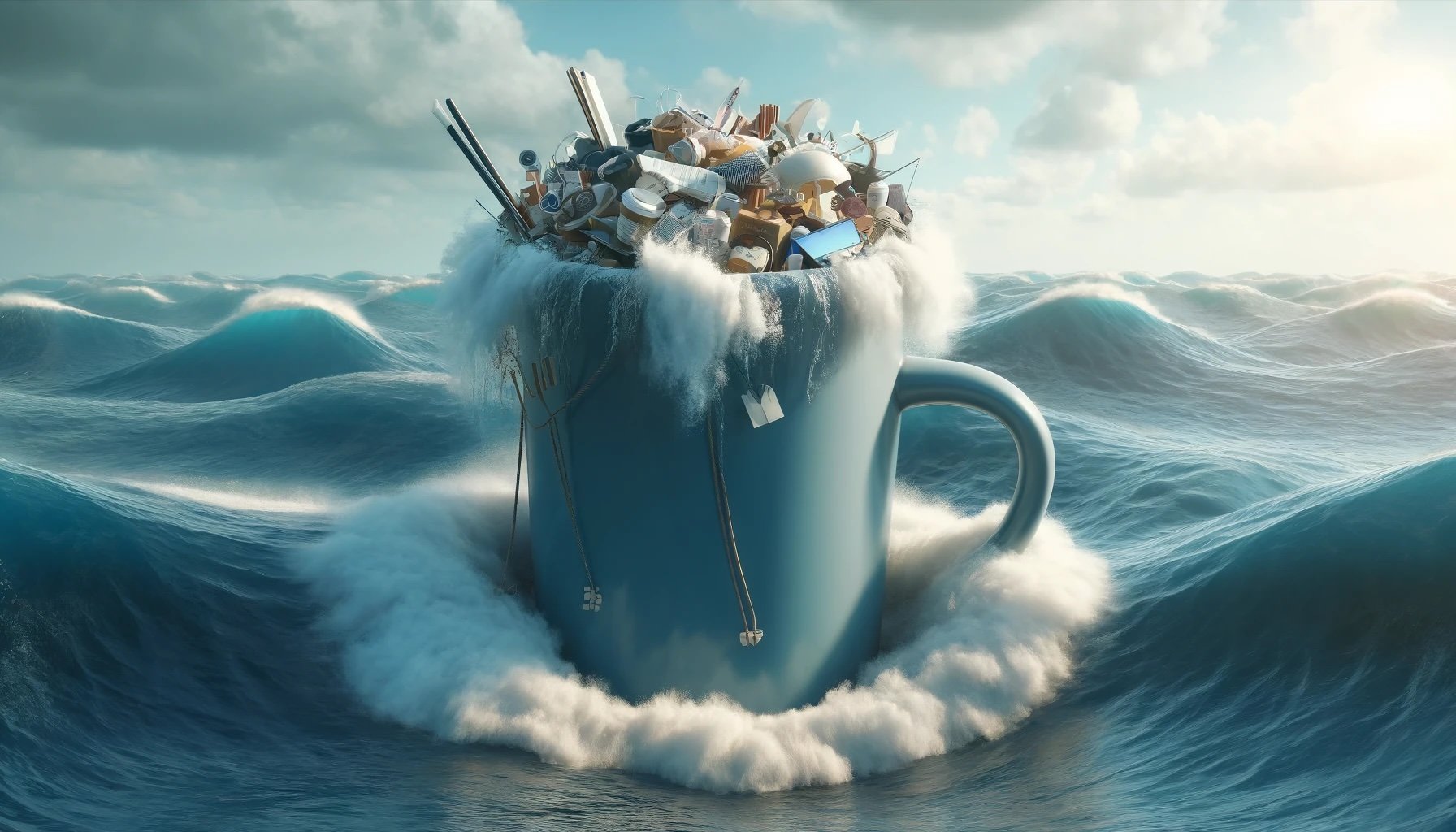You can't walk on water
Image generated in DALL-E by Alexis Haselberger
I realized the other day that I use water metaphors ALL THE TIME when I’m talking about time.
So, I thought I’d do a little round-up of my go-to’s in case these can help you to reframe, or better understand why you’re doing what you’re doing, or why you find yourself in the situation you’re in.
As they say, a picture’s worth a thousand words, and a metaphor is essentially a mental image.
Here’s goes!:
Drowning vs. Keeping Your Head Above Water
I think this is the most common one.
I bet you often feel like you’re drowning in tasks, in stuff to do.
There’s more than you can do and you’re thrashing around trying to grab hold of something, anything, to keep your head above water.
But when you’re drowning, the first step isn’t to get your entire body out of the water right away, it’s to make sure you can breathe.
You want to focus on getting just your head above water; your mouth, and your nose.
Because that’s reality.
None of us can walk on water.
You’re not going to find yourself in a position where you’re on top and everything you need to do is already done, below you.
That’s not how real life works.
There’ll always be more to do. Life keeps going.
But when your head is above water, you’re in a good position.
You can breathe.
You can see.
You can make decisions.
Ebb and Flow
The demands on your time can feel like tides.
The water ebbs and flows.
Sometimes, you’re in the thick of it.
The waves are coming fast and furious. They’re crashing. The tide is high. There’s so much to do and so little time.
And, then, sometimes, it ebbs.
The tide is low, the waves are nonexistent. You can stroll through the water, ankle deep, without fear it’ll soak your pants.
And here’s the thing: when the tides are high, you long for the low tide.
And when the tide is low, you feel like we must be missing something, like there’s not enough, like you’re bored.
But you need both. And that’s good.
Because you’ll get both.
And if you want to know how to set yourself up for high tides during the low tide times, here’s an article I wrote a while back about this.
Your task system is your buoy
I wrote about this a while back as well and if you want to read it, here it is but here’s the TL/DR:
Think of your task system as a floating device, an inner tube.
It does take some effort to blow it up (aka to set it up), but once you’ve got it, now you can sit in it, and float down that lazy river, knowing it’s there to support you.
The overflowing cup
I often work with folks who have objectively too much on their plates.
They’re trying to do the work of 3 people.
And they feel like they’re failing.
Or maybe they’re making it work but at the expense of their personal lives and health.
They think that if they can just get more efficient, they’ll be able to fit everything in.
And when you get more efficient, you can certainly do more. That’s true.
But I want you to think of your time capacity like a cup of water.
Maybe you’re the most efficient person on earth, and your cup is very large.
You can fit in a lot of water.
But eventually, if you keep pouring in more water, it’ll spill all over the place.
There is a cap on your capacity and it’s the top of that vessel.
If you want to fit more in, well, you’re going to have to pour some out first.
You don’t have the power to make water take up less space.
But you do have the power to decide what goes in the cup.


